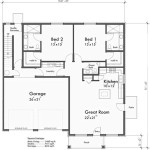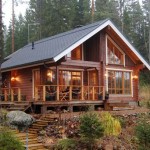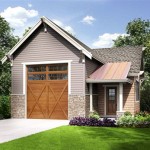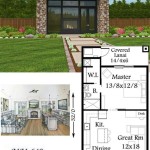Martin bird house plans provide detailed instructions for constructing specialized nesting boxes designed to attract and support colonies of purple martins, a beloved species of swallow. These plans specify the optimal dimensions, materials, and construction techniques to create an ideal nesting environment for these birds. By carefully following these plans, individuals can provide a safe and welcoming shelter for purple martins, fostering their populations and enriching their local ecosystem.
Purple martins are highly social birds that form large colonies during the breeding season. They primarily nest in cavities, such as tree holes or abandoned woodpecker nests. However, with the dwindling availability of natural nesting sites due to deforestation and urbanization, Martin bird house plans offer a solution to ensure their continued success.
In the following sections, we will delve into the specific details and considerations involved in building a Martin bird house, guiding you through the process to provide optimal nesting conditions for these fascinating birds.
When constructing a Martin bird house, meticulous attention to specific details is crucial to ensure its effectiveness and appeal to purple martins. Here are 9 important points to consider:
- Proper dimensions
- Suitable entrance holes
- Adequate ventilation
- Durable materials
- Predator guards
- Multiple compartments
- Easy cleaning access
- Appropriate placement
- Regular maintenance
By incorporating these elements into your Martin bird house design and maintenance routine, you can create an inviting and successful nesting environment for these remarkable birds.
Proper dimensions
The dimensions of a Martin bird house are crucial to ensure the comfort and safety of its avian occupants. The overall size of the house should be large enough to accommodate a colony of purple martins, which can range in size from 12 to 24 pairs. A house with a height of 24 to 30 inches, a width of 18 to 24 inches, and a depth of 12 to 18 inches is generally suitable.
The size of the entrance holes is also important. Purple martins prefer entrance holes that are 2 inches in diameter, which is large enough for them to enter and exit easily but small enough to deter predators. The bottom of the entrance hole should be placed approximately 1 inch above the floor of the house.
Adequate ventilation is essential to prevent the buildup of moisture and ammonia inside the bird house. Ventilation holes should be placed near the top of the house, opposite the entrance holes. These holes should be approximately 1/2 inch in diameter and covered with mesh to prevent birds from escaping.
The materials used to construct the bird house should be durable and weather-resistant. Cedar, redwood, or cypress are all good choices, as they are naturally resistant to rot and decay. The house should also be painted with a non-toxic paint to further protect it from the elements.
By following these guidelines, you can ensure that your Martin bird house is the perfect size and shape to attract and support a colony of these beautiful birds.
Suitable entrance holes
The entrance holes of a Martin bird house are one of the most important design elements, as they play a crucial role in attracting and accommodating purple martins. The size, shape, and placement of the entrance holes must be carefully considered to ensure that they are both inviting to the birds and effective in deterring predators.
The ideal entrance hole for a Martin bird house is 2 inches in diameter. This size is large enough for purple martins to enter and exit easily, but small enough to deter predators such as raccoons and owls. The entrance holes should be placed approximately 1 inch above the floor of the house, which allows the birds to enter and exit without having to perch on the edge of the hole.
The shape of the entrance hole is also important. Purple martins prefer entrance holes that are round or oval, as these shapes are less likely to snag their feathers. Avoid using square or triangular entrance holes, as these shapes can be more difficult for the birds to enter and exit.
The placement of the entrance holes is also important. The entrance holes should be placed on the side of the house that receives the most sunlight. This will help to keep the house warm and inviting for the birds. Avoid placing the entrance holes on the side of the house that is exposed to the prevailing wind, as this can make it difficult for the birds to enter and exit the house.
By following these guidelines, you can ensure that the entrance holes of your Martin bird house are suitable for attracting and accommodating purple martins.
Adequate ventilation
Proper ventilation is essential for the health and well-being of purple martins. A well-ventilated bird house will help to prevent the buildup of moisture and ammonia, which can lead to respiratory problems and other health issues for the birds. Ventilation also helps to regulate the temperature inside the bird house, keeping it cool in the summer and warm in the winter.
- Multiple ventilation holes: Install multiple ventilation holes near the top of the bird house, opposite the entrance holes. These holes should be approximately 1/2 inch in diameter and covered with mesh to prevent birds from escaping.
- Cross-ventilation: Position the ventilation holes on opposite sides of the bird house to create cross-ventilation. This will help to circulate the air inside the house and prevent the buildup of moisture.
- Avoid overcrowding: Do not overcrowd the bird house. Overcrowding can lead to poor ventilation and health problems for the birds.
- Regular cleaning: Regularly clean the bird house to remove droppings and other debris. This will help to prevent the buildup of moisture and ammonia.
By following these guidelines, you can ensure that your Martin bird house has adequate ventilation, which is essential for the health and well-being of the birds.
Durable materials
The materials used to construct a Martin bird house should be durable and weather-resistant to withstand the elements and provide a long-lasting home for the birds. The following are some important considerations when choosing materials for your Martin bird house:
- Cedar, redwood, or cypress: These woods are naturally resistant to rot and decay, making them ideal for building bird houses. They are also relatively lightweight and easy to work with.
- Pressure-treated lumber: Pressure-treated lumber is treated with chemicals that make it resistant to rot and decay. However, it is important to note that pressure-treated lumber can be toxic to birds, so it should not be used for the interior of the bird house.
- Plastic: Plastic is a durable and weather-resistant material that is easy to clean. However, it can be difficult to work with and can become brittle in cold weather.
- Metal: Metal is a durable and weather-resistant material, but it can be difficult to work with and can become hot in the sun. It is important to use a non-toxic paint to coat metal bird houses to prevent the metal from rusting and becoming toxic to the birds.
By choosing durable materials and constructing your Martin bird house with care, you can create a long-lasting home for these beautiful birds.
Predator guards
Protecting purple martins from predators is essential for the success of any Martin bird house colony. Predators such as raccoons, owls, and snakes can easily access bird houses and prey on the eggs and chicks inside. Predator guards are devices that can be installed on bird houses to deter predators and keep the birds safe.
- Slippery poles: Slippery poles are metal poles that are coated with a slippery material, such as grease or petroleum jelly. Predators cannot climb slippery poles, so they are an effective way to prevent them from reaching the bird house.
- Baffle boxes: Baffle boxes are boxes that are placed around the entrance holes of bird houses. Predators cannot fit through baffle boxes, so they are an effective way to prevent them from entering the bird house.
- Predator guards: Predator guards are metal cages that are placed around the entire bird house. Predator guards are the most effective way to protect bird houses from predators, but they can also be expensive and difficult to install.
- Motion-activated sprinklers: Motion-activated sprinklers are devices that spray water when they detect movement. Motion-activated sprinklers can be an effective way to deter predators, but they can also be expensive and require a water source.
By installing predator guards on your Martin bird house, you can help to protect the birds from predators and ensure the success of your colony.
Multiple compartments
Providing multiple compartments within a Martin bird house is essential for several reasons. Firstly, it allows for the accommodation of larger colonies, as each compartment can house a separate pair of purple martins. Secondly, multiple compartments help to reduce competition among the birds for nesting sites, which can lead to aggressive behavior and even the abandonment of nests. Finally, multiple compartments provide the birds with options, allowing them to choose the compartment that best suits their needs.
- Increased capacity: Multiple compartments allow for a larger number of purple martins to nest in the bird house, which can be beneficial for establishing and maintaining a healthy colony.
- Reduced competition: With multiple compartments, the birds have more options for nesting sites, which reduces competition and aggression among the colony members.
- Flexibility and choice: Multiple compartments provide the birds with the flexibility to choose the compartment that best suits their needs, whether it be based on size, location, or other factors.
- Improved sanitation: Multiple compartments allow for easier cleaning and maintenance of the bird house, as each compartment can be accessed and cleaned individually.
When designing a Martin bird house with multiple compartments, it is important to consider the size and spacing of the compartments. The compartments should be large enough to accommodate a pair of purple martins and their nest, but not so large that they waste space. The compartments should also be spaced apart to provide each pair of birds with privacy and to reduce the risk of disease transmission.
Easy cleaning access
Maintaining proper hygiene and cleanliness within a Martin bird house is crucial for the health and well-being of its avian inhabitants. Regular cleaning helps prevent the accumulation of droppings, nesting materials, and other debris, which can create a breeding ground for bacteria and parasites. Easy cleaning access is therefore an essential consideration in the design of Martin bird house plans.
- Removable roof or side panels: Incorporating a removable roof or side panels allows for quick and effortless access to the interior of the bird house. This facilitates thorough cleaning and inspection, enabling the removal of soiled nesting materials and droppings, and the detection of any potential issues.
- Smooth interior surfaces: Smooth interior surfaces make cleaning easier and more effective. Rough or textured surfaces can trap debris and make it difficult to remove, potentially compromising the hygiene of the bird house.
- Adequate ventilation: Proper ventilation is not only crucial for the health of the birds but also for maintaining a clean environment within the bird house. Ventilation helps circulate air and reduce moisture levels, preventing the growth of mold and bacteria.
- Regular cleaning schedule: Establishing a regular cleaning schedule is essential for maintaining the hygiene of the bird house. Regularly removing droppings and debris helps prevent the spread of disease and ensures the well-being of the birds.
By incorporating these features into Martin bird house plans, you can ensure that the bird house is easy to clean and maintain, providing a healthy and comfortable environment for the birds.
Appropriate placement
Selecting the ideal location for your Martin bird house is crucial to ensure its effectiveness and the well-being of the birds. Here are several key considerations regarding appropriate placement:
Unobstructed Flight Path: Ensure that the bird house is placed in an open area with a clear flight path for the martins. Avoid placing the house near trees, buildings, or other structures that may obstruct the birds’ flight.
Sufficient Sunlight: Purple martins prefer warm and sunny nesting sites. Position the bird house in an area that receives ample sunlight throughout the day. This will help keep the house warm and inviting for the birds.
Protection from Wind and Rain: Choose a location that provides protection from strong winds and heavy rain. Exposure to harsh weather conditions can make the bird house uncomfortable and even dangerous for the birds.
Distance from Human Activity: While martins are relatively tolerant of human activity, it is still important to place the bird house in an area that is not heavily trafficked by people or pets. Excessive disturbance can stress the birds and disrupt their nesting behavior.
By carefully considering these factors and selecting an appropriate placement for your Martin bird house, you can create an optimal environment that will attract and support a thriving colony of these fascinating birds.
Regular maintenance
Regular maintenance is essential to ensure the longevity and effectiveness of your Martin bird house. By performing routine inspections and upkeep, you can maintain a clean and healthy environment for the birds, promote successful nesting seasons, and extend the lifespan of your bird house.
- Clean the bird house:
Regular cleaning is crucial to remove droppings, debris, and nesting materials that can accumulate over time. Clean the bird house at least once a year, preferably before the nesting season begins. Use a mild detergent and warm water to clean the interior surfaces, and allow the bird house to dry thoroughly before placing it back outside.
- Inspect the bird house:
Inspect the bird house regularly for any signs of damage or deterioration. Check for cracks, holes, or loose parts that may need repair. Pay attention to the entrance holes and ventilation openings to ensure they are unobstructed and functioning properly.
- Remove old nests:
After the nesting season is over, remove old nests from the bird house. This will make it more attractive to new tenants in the following season and prevent the accumulation of debris.
- Repaint the bird house:
Every few years, repaint the bird house with a fresh coat of exterior paint. This will help protect the wood from the elements and maintain the bird house’s appearance.
By following these regular maintenance practices, you can keep your Martin bird house in optimal condition, providing a safe and welcoming home for these beautiful birds for many years to come.










Related Posts








